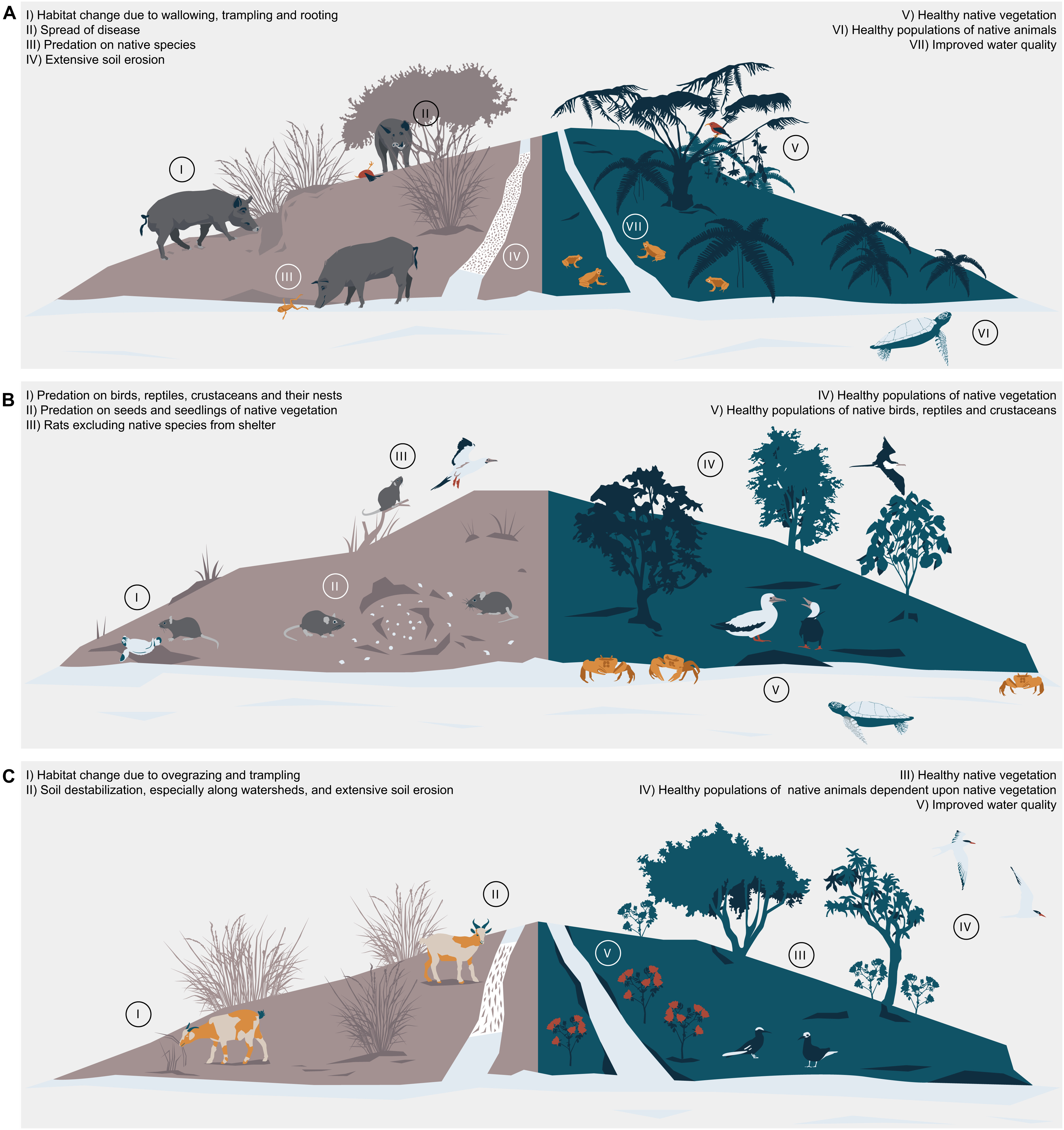 Figure 2. Diversity of terrestrial ecosystem changes that have been documented to follow island introduction of invasive mammals. The ecosystem changes are linked to the ecology of the invasive mammal, and some of the stereotyped shifts are captured. (A) Pigs are a common invader across islands, often introduced deliberately by humans for food. (B) Rats and other rodents are often introduced accidentally, traveling aboard ships and colonizing islands worldwide. (C) Goats can be introduced to islands for their perceived value as livestock, but without management can lead to dramatic shifts to island ecosystems. Note that the effects of invasive mammals will vary based upon the natural history of the island and the exact species of invader.
Figure 2. Diversity of terrestrial ecosystem changes that have been documented to follow island introduction of invasive mammals. The ecosystem changes are linked to the ecology of the invasive mammal, and some of the stereotyped shifts are captured. (A) Pigs are a common invader across islands, often introduced deliberately by humans for food. (B) Rats and other rodents are often introduced accidentally, traveling aboard ships and colonizing islands worldwide. (C) Goats can be introduced to islands for their perceived value as livestock, but without management can lead to dramatic shifts to island ecosystems. Note that the effects of invasive mammals will vary based upon the natural history of the island and the exact species of invader.
The eradication of invasive pests from islands has far-reaching benefits beyond the immediate terrestrial ecosystem with seabirds identified as playing a key role as a “connector species” whose activities provide a crucial link between, and benefits to, terrestrial and marine ecosystems.
The new perspective titled, "Harnessing island–ocean connections to maximize marine benefits of island conservation" by Stuart Sandin (Scripps Institution of Oceanography, University of California San Diego, La Jolla, U.S.A) and colleagues has been published open access in the Proceedings of the National Academy of Sciences (PNAS).
The abstract follows:
“Islands support unique plants, animals, and human societies found nowhere else on the Earth. Local and global stressors threaten the persistence of island ecosystems, with invasive species being among the most damaging, yet solvable, stressors. While the threat of invasive terrestrial mammals on island flora and fauna is well recognized, recent studies have begun to illustrate their extended and destructive impacts on adjacent marine environments. Eradication of invasive mammals and restoration of native biota are promising tools to address both island and ocean management goals. The magnitude of the marine benefits of island restoration, however, is unlikely to be consistent across the globe. We propose a list of six environmental characteristics most likely to affect the strength of land–sea linkages: precipitation, elevation, vegetation cover, soil hydrology, oceanographic productivity, and wave energy. Global databases allow for the calculation of comparable metrics describing each environmental character across islands. Such metrics can be used today to evaluate relative potential for coupled land–sea conservation efforts and, with sustained investment in monitoring on land and sea, can be used in the future to refine science-based planning tools for integrated land–sea management. As conservation practitioners work to address the effects of climate change, ocean stressors, and biodiversity crises, it is essential that we maximize returns from our management investments. Linking efforts on land, including eradication of island invasive mammals, with marine restoration and protection should offer multiplied benefits to achieve concurrent global conservation goals.”
Reference:
Sandin, S.A., Becker, P.A., Becker, C. et al. 2022. Harnessing island–ocean connections to maximize marine benefits of island conservation, Proceedings of the National Academy of Sciences. Vol. 119, No. 51. DOI: 10.1073/pnas.2122354119.
06 January 2023

 Español
Español  English
English  Français
Français